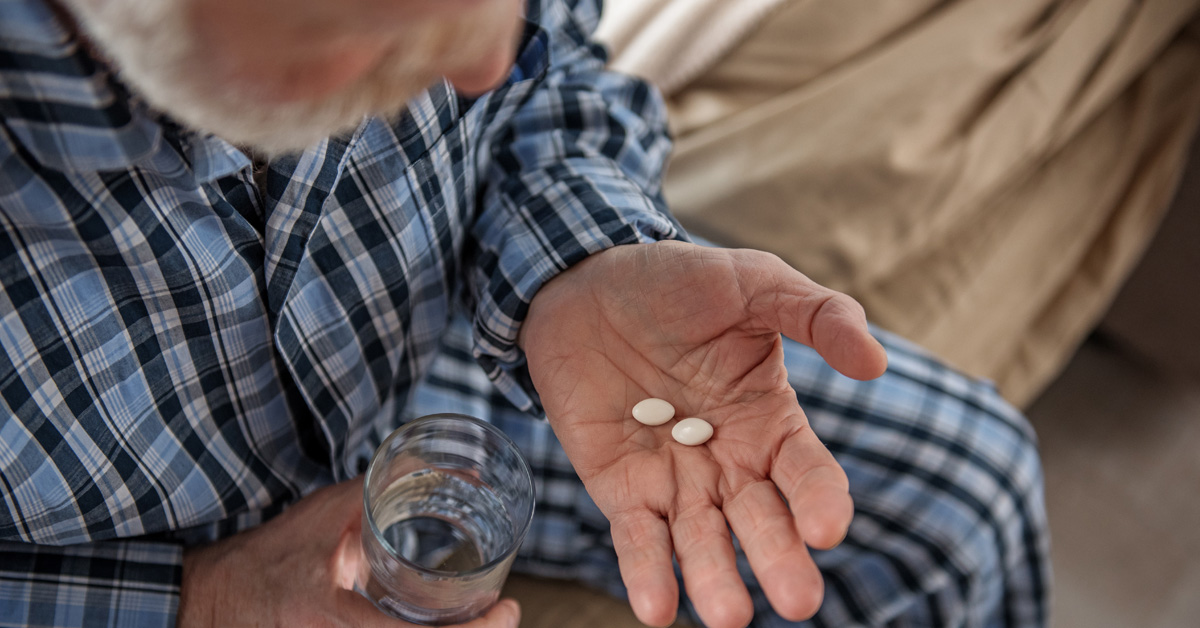
Is the Opioid Epidemic Harming Hospice Patients?
In July, the International Journal of Palliative Nursing published the research of Joshua Borders and colleagues from the University of North Carolina, Greensboro. The research team notes that rising rates of opioid abuse have led to policies designed to put a chill on opioid prescribing.1 Using a literature-review approach, the team set out to assess how the policies may be affecting hospice doctors and their patients.
[Here we review the scientific evidence, which discusses people in general. This cannot be construed as individual medical advice. Hospice medications should only be taken under the prescription of a doctor, physician’s assistant, or nurse practitioner.]The Current State of the Opioid Epidemic
In October 2017, the White House declared the opioid crisis a national Public Health Emergency. Nevertheless, on July 14, 2021, data from the National Center for Health Statistics showed a steep rise in overdose deaths. From December 2019 to December 2020, opioid overdose deaths rose 29.4% to 93,000 Americans in one year. From 1999 to 2019, the number of opioid-related deaths topped 500,000 Americans.
Dying Patients Less Likely to Have Effective Pain Control Than Ten Years Ago, Especially Non-Whites
High levels of pain are an unfortunate but usually manageable part of dying – especially when the diagnosis is cancer. Oncologists and hospice nurses use opioids as a staple for protecting dying patients from this pain. However, a report presented at the recent annual meeting of the American Society of Clinical Oncology shows that Americans near the end of life are 42% more likely to have uncontrolled pain than in years past.2 Andrea C. Enzinger, MD of the Dana-Farber Cancer Institute, and her research team blamed overreach of the government’s opioid prescribing restrictions. Importantly, researchers excluded hospice patients from this analysis.
Can Hospice Be Part of the Opioid Crisis?
Theoretically, hospice could be part of the opioid crisis if meds prescribed to the hospice patient were diverted to other people. Over 90% of hospice patients are prescribed opioids for pain management.3 In a survey of 371 hospice providers published in the Journal of the American Medical Association, three out of ten hospices report one or more confirmed cases of diversion.4 Six out of ten hospices report one or more suspected cases of diversion.
Why Does Hospice Need Opioids?
Intense pain is a common feature of terminal disease near the end of life. Fortunately, hospice is very good at pain management. Hospice can manage symptoms effectively for most patients. Sedatives and high-dosage opioids are common in hospice treatment. Without them, hospice’s ability to manage pain so effectively could be compromised.
Opioid Prescriptions Do Not Harm Hospice Patients
Doctors have raised questions about the appropriateness of sedatives and high-dosage opioids for patients already weakened by advanced disease.5-9 With long-term addiction not being a prevailing concern in hospice, focus shifts to questions of length and quality of life. The evidence shows that high-dosage opioids do not shorten life for people who qualify for hospice.10-12 In fact, when patients have their dosages increased to the amount needed to control pain during hospice, length of life improves 54% (14 days versus 9.1 days). The combination of opioids and sedatives correlates with survival improving more than 100%.13
Conclusion
In the current study by Borders, et al., the researchers conclude that opioids are necessary in hospice and palliative care in order to manage pain. In general, regulations have been effective at dissuading doctors from prescribing opioids, but this does not necessarily apply to hospice. The team finds that further research is necessary to examine the possible negative impact of the opioid epidemic on opioid prescribing in hospice and palliative care.
References
- Borders JR, Letvak S, Amirehsani KA, Ross R, Phifer N. Opioid epidemic and prescribing in hospice and palliative care: a review of the literature. International Journal of Palliative Nursing. 2021 Jul 2;27(5):255-61.
- Enzinger AC, Ghosh K, Keating NL, Cutler DM, Landrum MB, Wright AA. US trends and racial/ethnic disparities in opioid access among patients with poor prognosis cancer at the end of life (EOL). Journal of Clinical Oncology. 2020; 38(15): 7005-7005.
- Cagle JG. Strategies for Detecting, Addressing, and Preventing Drug Diversion in Hospice and Palliative Care (P15). Journal of Pain and Symptom Management. 2019 Feb 1;57(2):360.
- Cagle JG, McPherson ML, Frey JJ, Sacco P, Ware OD, Wiegand DL, Guralnik JM. Estimates of Medication Diversion in Hospice. JAMA. 2020 Feb 11;323(6):566-8.
- Wilson W, Smedira N, Fink C, et al. Ordering and administration of sedatives and analgesics during the withholding and withdrawal of life support from critically ill patients. JAMA. 1992; 267: 949-953.
- Cavanaugh T. The ethics of death-hastening or death-causing palliative analgesic administration to the terminally ill. J Pain Symptom Manage. 1996; 12: 248-254.
- Cantor N, Thomas G. Pain relief, acceleration of death, and criminal law. Kennedy Inst Ethics J. 1996; 6: 107-127.
- Krakauer E, Penson R, Truog R, et al. Sedation for intractable distress of a dying patient: acute palliative care and the principle of double effect. Oncologist. 2000; 5 (1): 53-62.
- Kaldjian L, Jekel J, Bernene J, et al. Internists’ attitudes towards terminal sedation in end of life care. J Med Ethics. 2004; 30 (5): 499-503.
- Azoulay D, Jacobs J, Cialic R, et al. Opioids, survival, and advanced cancer in the hospice setting. Journal of the American Medical Directors Association. October 16, 2010; (available online ahead of print publication at http://www.jamda.com/article/S1525-8610(10)00242-2/abstract )
- Bercovitch M, Adunsky A. Patterns of high-dose morphine use in a home-care hospice service: should we be afraid of it? Cancer. 2004; 101: 1473-1477.
- Bercovitch M, Waller A, Adunsky A. High dose morphine use in the hospice setting. A database survey of patient characteristics and effect on life expectancy. Cancer. 1999; 86: 871-877.
- Golčić M, Dobrila-Dintinjana R, Golčić G, Čubranić A. The Impact of Combined Use of Opioids, Antipsychotics, and Anxiolytics on Survival in the Hospice Setting. Journal of Pain and Symptom Management. 2018 Jan 1;55(1):22-30.





